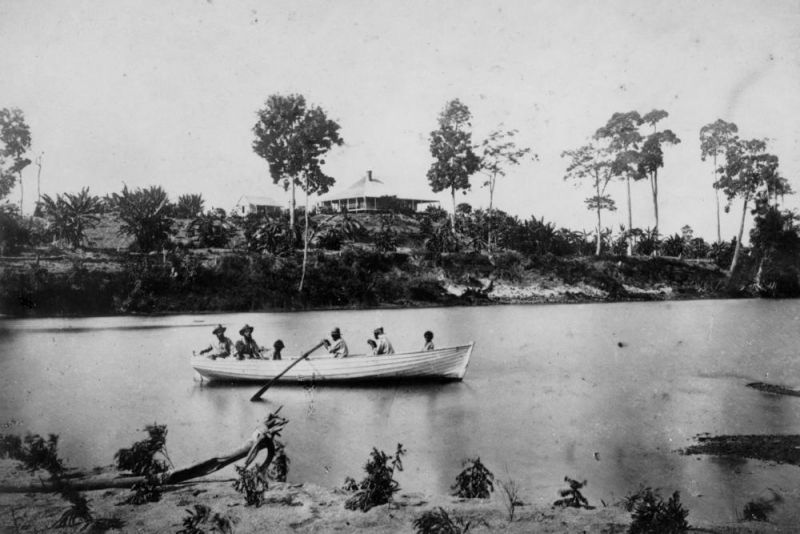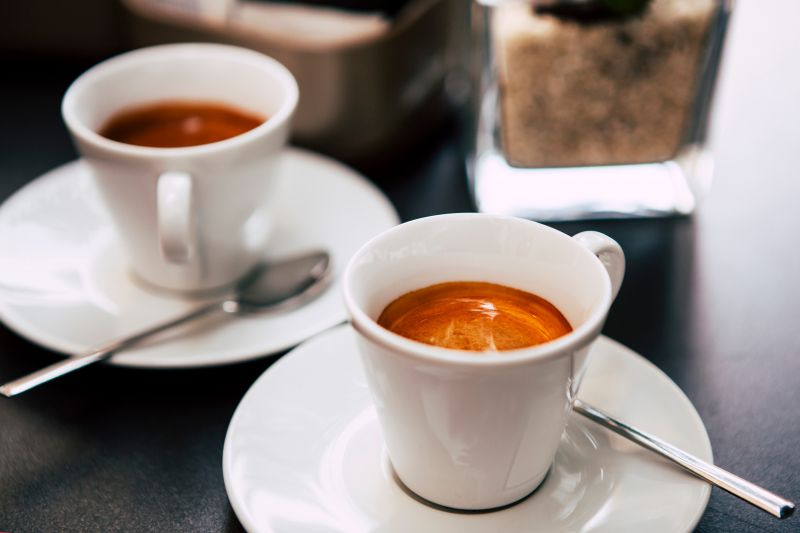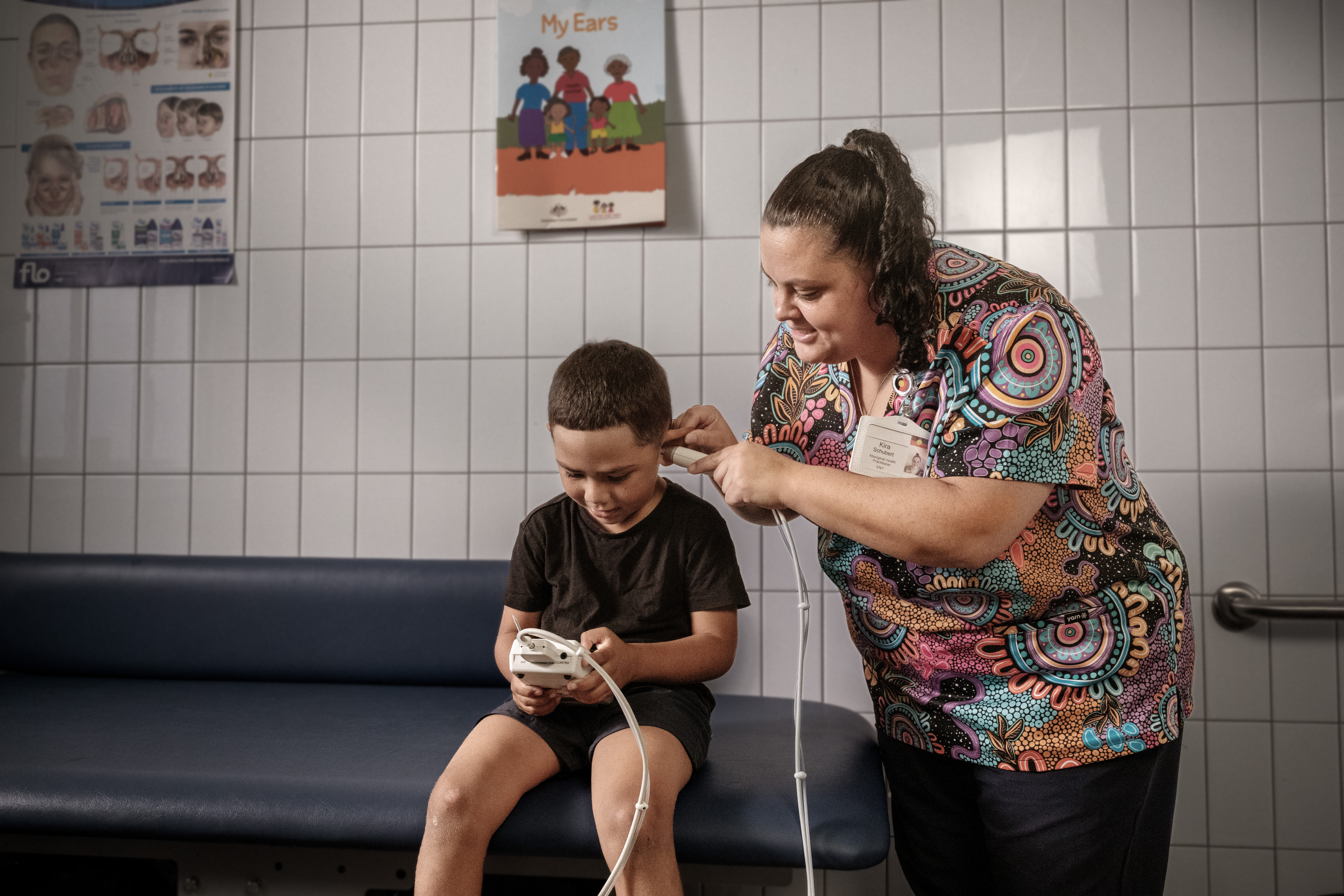This is the story of how Italian sugar growers in the Sunshine State are said to have inspired the “invention” of the flat white – a drink that would go on to become a global sensation.
Tracing this history shows a different side to how European tastes were imported to Australia beyond the capital cities. It also reminds us big trends can come from small towns, and that multicultural influence can be easily taken for granted in something as basic as your daily cup of coffee.
The Little Italy of Northern Queensland
Popular conceptions of Italian migrants in Australia are often focused on the wave of migration to the capital cities in the 1950s, overlooking the many migrants who were already settled in regional areas.
In 1891, immigration agent and businessman Chiaffredo Venerano Fraire organised a scheme to recruit cane cutters on behalf of the Queensland government. More than 300 Italians came to the region as a result, prompting chain migration and concerns about their ability to assimilate.
North Queensland became an even more popular destination in the 1920s, after the United States introduced quotas for Italian migrants. By 1925, Italians owned 44% of the sugar farms in the Herbert River area.

These Italian communities expanded further after WWII, as did their cultural influence. The Australian Italian festival, established in 1995 by the Italian community in Ingham and Hinchinbrook shire, celebrates and preserves the legacy of Italian culture in the district.
What’s in a name?
There are many claims regarding the origin of the flat white, from England to New Zealand. But the best case for coining the term comes from Sydney cafe owner Alan Preston, who details his reasoning extensively online. While the origin debate rages on, Preston’s argument has the most solid historical evidence to back it.
The exact phrase “flat white” appeared on the coffee menu in Preston’s cafe, Moors Espresso Bar, in 1985 in Sydney’s Chinatown area. Preston claims he was the first to use the term on a menu, and has documented this use through photographs.
He says he brought this style of espresso-based drink to Sydney from Far North Queensland, where he’s originally from. The drink was supposedly popular in cafes in sugar-producing towns as it catered to the tastes of wealthy Italian growers and their families.
According to Preston, these cafes had the best espresso machines available at the time, imported from Italy. There would be five coffee options on offer. The black options were the short black and long black, and the white options were the cappuccino, Vienna and the “flat”. On his own menu, Preston changed the last one to “flat white” as a more efficient moniker.
After Moors Espresso Bar, Preston opened five more cafes with flat whites on the menu, popularising the name and style. In 2015, global coffee giant Starbucks added the flat white to its menu – a testament to its universality. Google is a fan too, and made the flat white its doodle of the day on March 11 2024.
Why is the flat white so popular?
The flat white’s widespread appeal comes down to its balance of textured (steamed) milk and espresso. The sign of a quality espresso is in its “crema”, the caramel-coloured emulsion of hot water and coffee bean oils.

A flat white blends the natural crema of an espresso shot with a thin layer of microfoam at the cup’s surface. Without the thicker foam of a latte or cappuccino, or the distraction of chocolate sprinkled on top, the flat white delivers a stronger coffee flavour with a unified creamy texture.
Preston says a properly prepared flat white should leave “tide marks” on the sides of the cup, showing the level go down with each sip.
Related articles

What is gingivitis? How do I know if I have it?
Do your gums look red and often bleed when you brush them, but they’re not painful? If so, you could have the gum disease gingivitis.
Read more

Not all processed foods are bad for you. Here’s what you can tell from reading the label
If you follow wellness content on social media or in the news, you’ve probably heard that processed food is not just unhealthy, but can cause serious harm.
Read more

Kids need to floss too, even their baby teeth. But how do you actually get them to do it?
A survey from the Australian Dental Association out this week shows about three in four children never floss their teeth, or have adults do it for them.
Read more

‘Perfect bodies and perfect lives’: how selfie-editing tools are distorting how young people see themselves
Like many of her peers, Abigail (21) takes a lot of selfies, tweaks them with purpose-made apps, and posts them on social media. But, she says, the selfie-editing apps do more than they were designed for.
Read more

Pathway to purpose
From limited beginnings to limitless dreams - equity in education is giving Arthur Demetriou the chance to change the face of medicine.
Read more

“I thought I was a bad mother”: How telehealth changed a young boy’s life and gave a family hope
“I thought I was a bad mother,” says Marlie Matthews, tearfully. “I tried everything, but Marcus was getting more and more behind. He wasn’t speaking much and when he did, I couldn’t understand him. It was very hard on all of us.”
Read more
Regional varieties
Perth’s unique “long mac topped up” and the enigmatic Melbourne “magic” are two more examples of how regional influences have given rise to different coffee preferences across Australia.
The West Coast’s long mac topped up has a milk to coffee ratio of 1:4 in a 180ml serving. It’s like a strong flat white where the coffee is no longer just “stained” by the milk (but somehow “double-shot flat white in a smaller cup” doesn’t roll off the tongue).
Similarly, the Melbourne magic is made with a double ristretto (a shorter, more robust espresso shot) and textured milk, and served in a 148ml (5 oz) cup. So it’s an even stronger flat white, in a smaller cup. The name “magic” may not reveal anything about the contents, but the proof is in the drinking.
Déjà brew
The presence of coffee in Australia is as old as the First Fleet, wherein plants imported from Rio de Janeiro were grown on Norfolk Island in 1788. Reflecting on its long and nuanced history reminds us of the contributions multiculturalism has made to the nation, and why new iterations of old things ought to be welcomed.
The story of the flat white, along with its regional variations, reflects a dynamic coffee culture that will continues to evolve to cater to new tastes. For now, we can thank the Italian migrants of sugar country.

Header image from John Oxley Library, State Library of Queensland
This article is republished from The Conversation under a Creative Commons license. Read the original article.